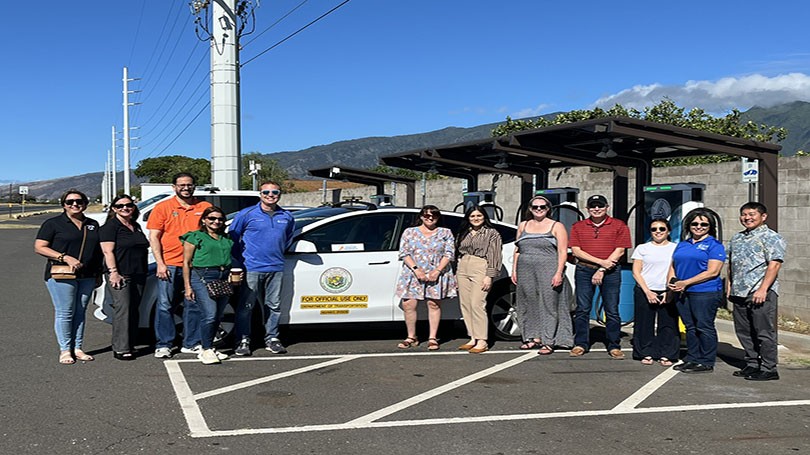Peer Exchange in Hawaii Bolsters EV Adoption in Island Communities
Aug. 6, 2024

Two of the nation’s most geographically unique locations, Hawaii and Puerto Rico, came together in a first-of-a-kind peer exchange ahead of the deadline for updating plans under the 2024 National Electric Vehicle Infrastructure (NEVI) Formula Program Funding for Fiscal Year 2025. Together, they traded valuable information and resources to bolster electric vehicle (EV) adoption in their regions.
Workshop participants included the Joint Office of Energy and Transportation (Joint Office), the Puerto Rico Highway Transportation Authority (PRHTA), the Hawaii Dept of Transportation (HDOT), Hawaiian Electric Company, Puerto Rico LUMA, Hawaii FHWA Division Office, and the Hawaii State Energy Office. Sessions over the course of the three-day workshop in Maui, Hawai’i, this June discussed best practices and challenges when installing EV infrastructure on islands, contracting methods, available initiatives and incentives, power grid considerations, and island-related challenges and opportunities.
"Participating in the NEVI Peer Exchange was definitely an amazing experience where Hawaii and Puerto Rico had the opportunity to share ideas and lessons learned throughout the NEVI implementation process. But most importantly, long-lasting relationships were formed and will continue the collaboration between both teams,” said Ana T. Alemañy-Martínez, NEVI project manager for Puerto Rico at AtkinsRéalis.
The workshop allowed stakeholders from both regions, which deal with shipping restrictions and unique tourism capabilities, to participate in round table discussions and site visits that helped them better understand NEVI program challenges, solutions, and opportunities to advance an efficient and safe national charging network.
“The ability to exchange information across both jurisdictions gave these transportation authorities and their partners the opportunity to consider different approaches, strategies, and investments to successfully and efficiently incorporate EV infrastructure in major corridors,” said Heather Richardson, Joint Office Technical Assistance lead for Hawaii.
The Joint Office was thrilled to contribute to this information exchange and participate in the hands-on work being done to understand grid resiliency challenges and solutions, optimal station placement based on unique geographical limitations, and planning for EV infrastructure installation in remote destinations. The Peer Exchange helps ensure the EV future of tomorrow is thoughtfully planned, efficiently built, and meets the needs of all Americans, regardless of where they live.
